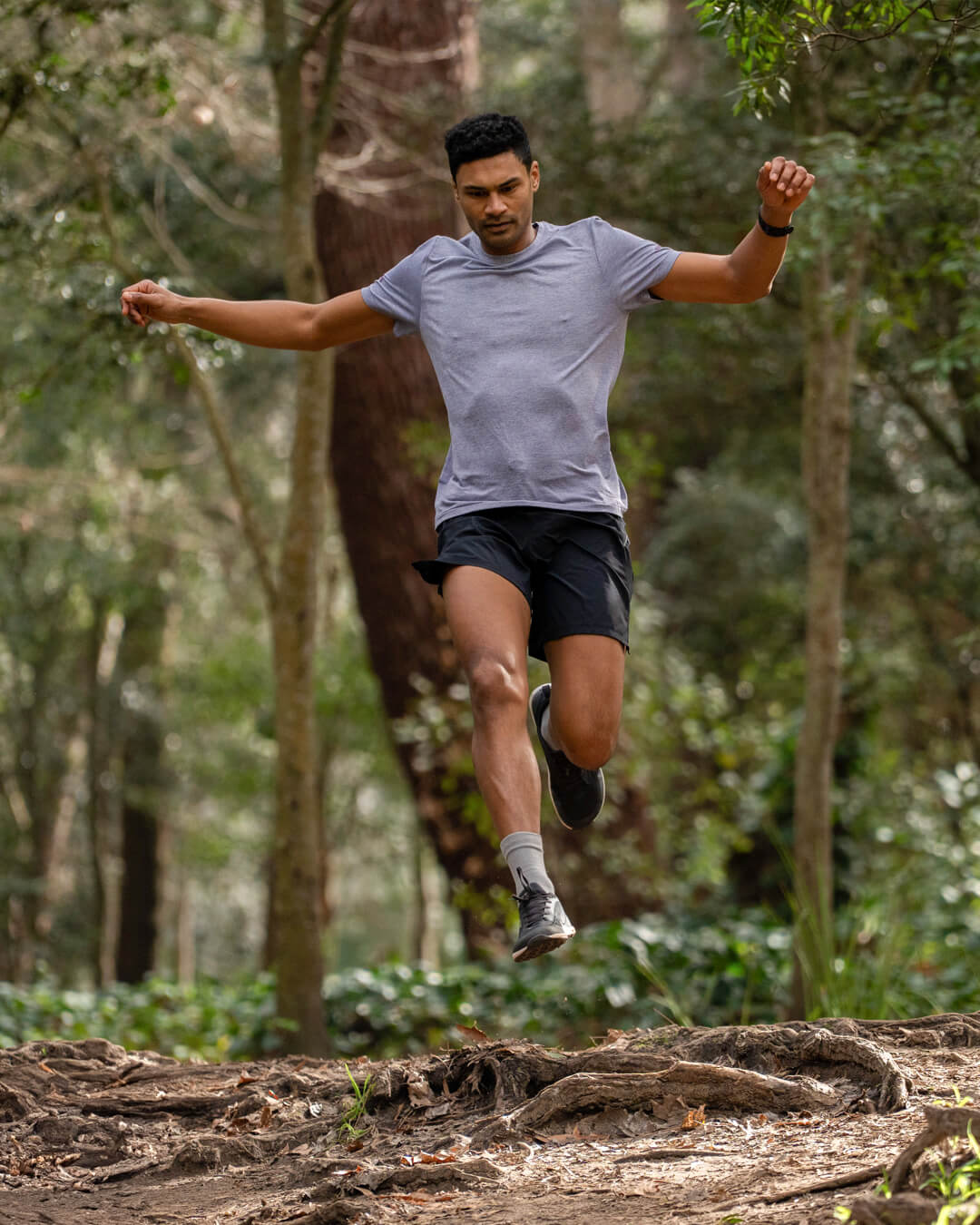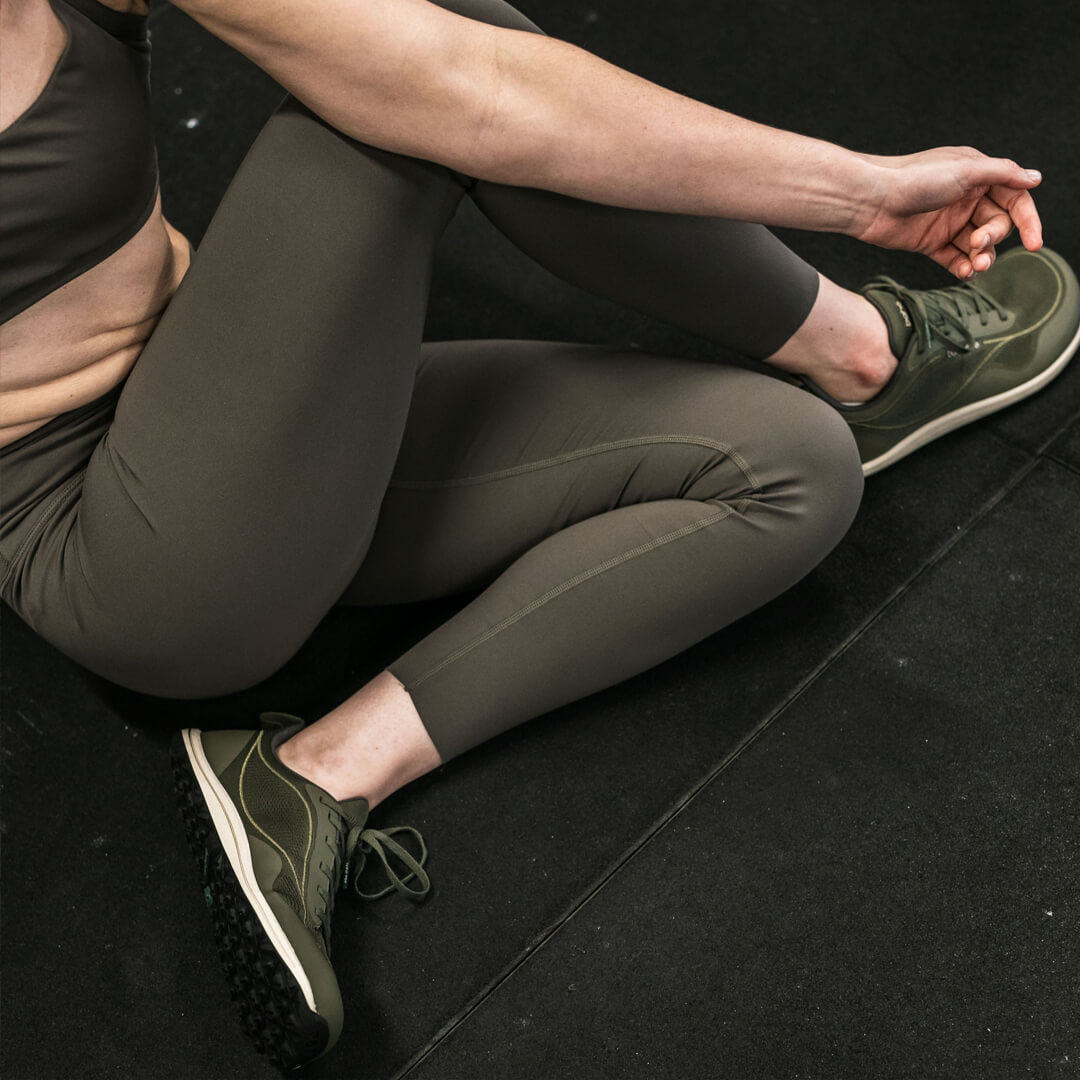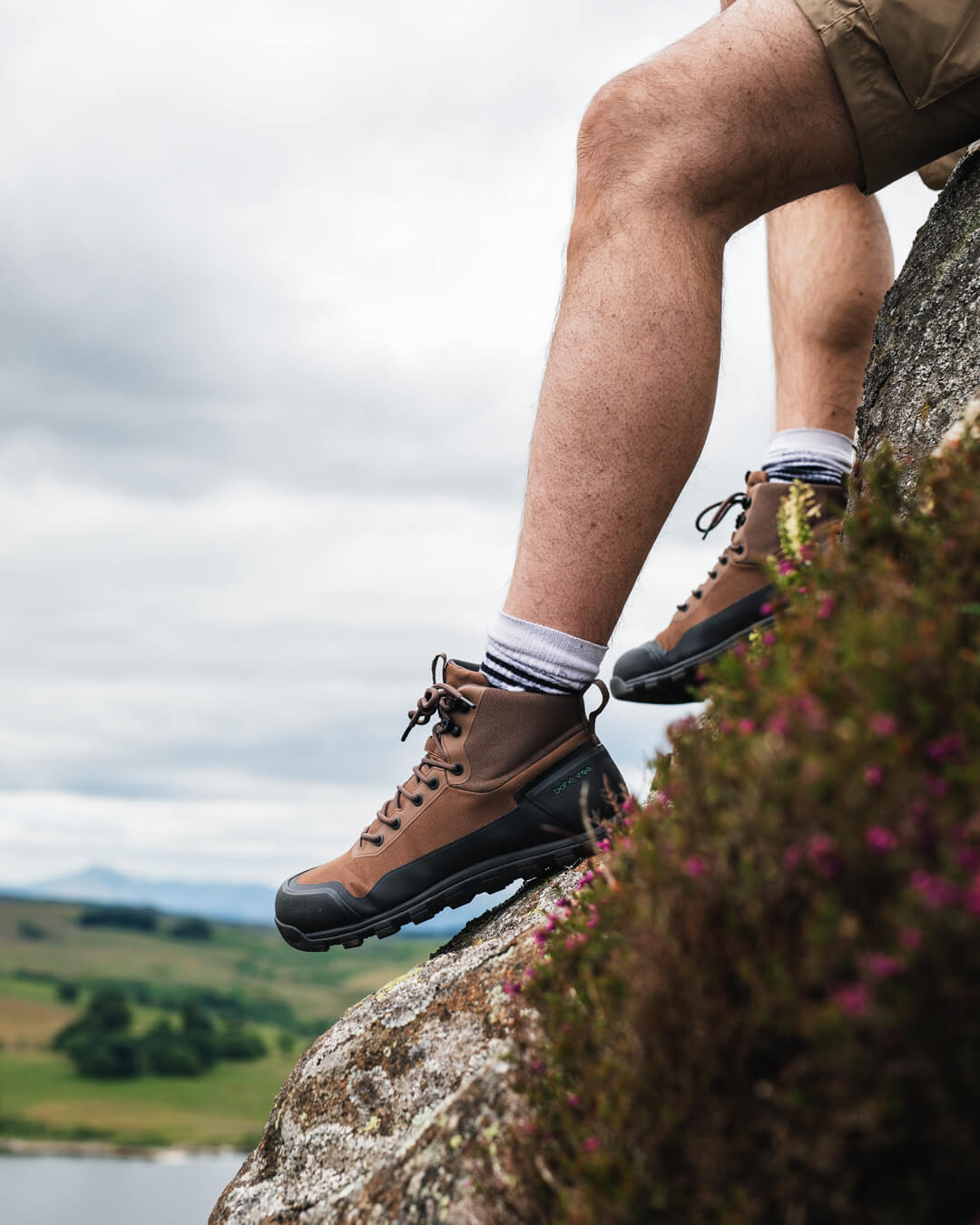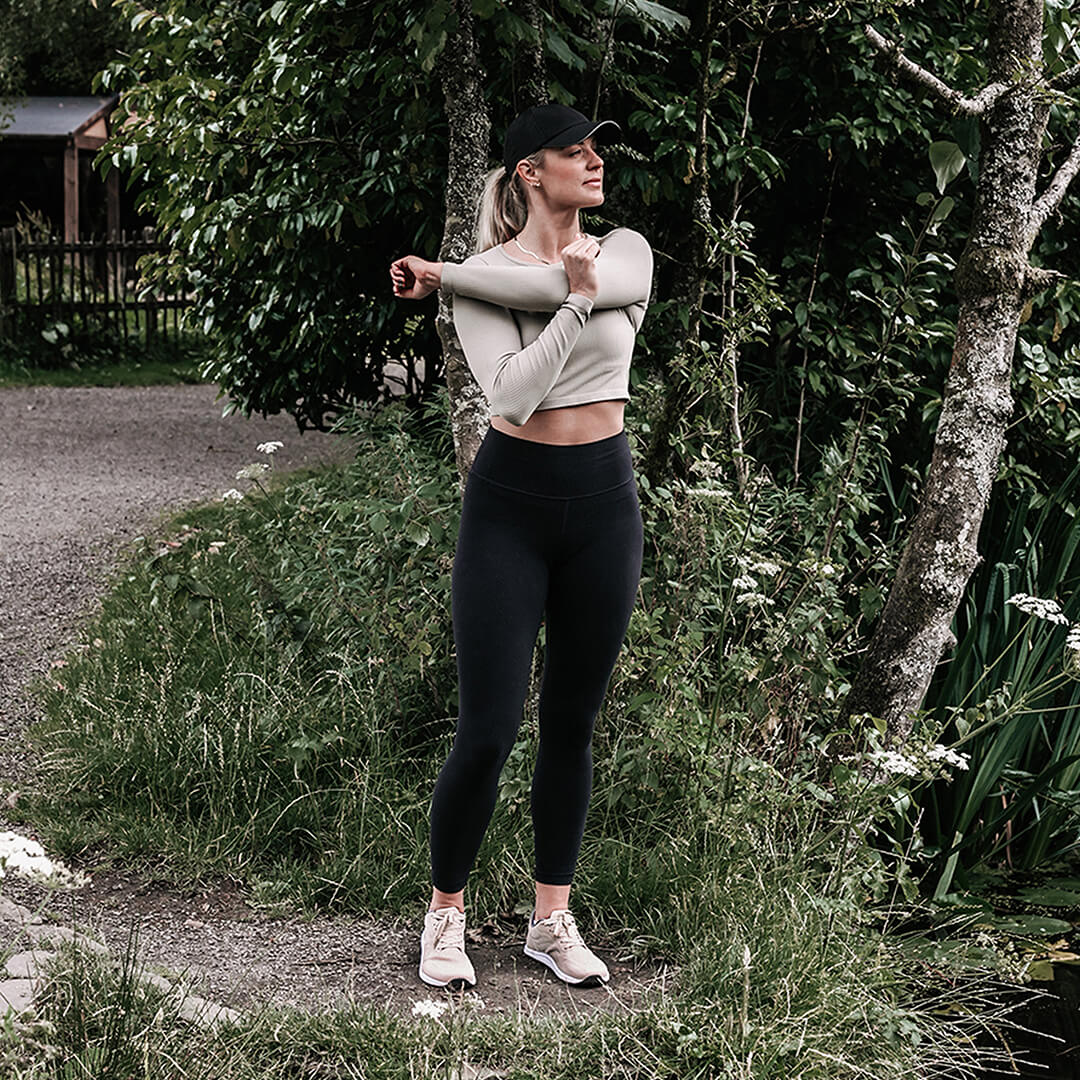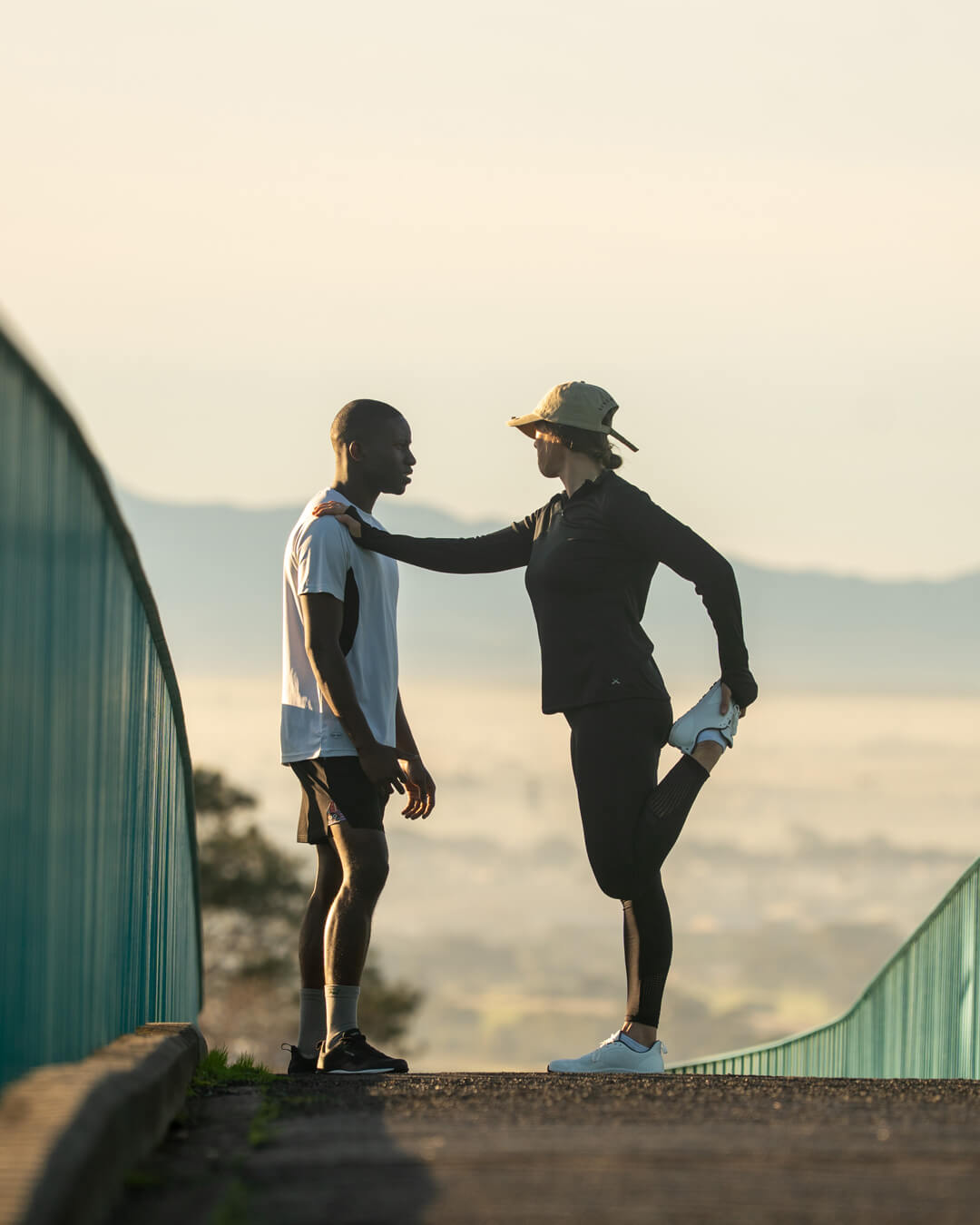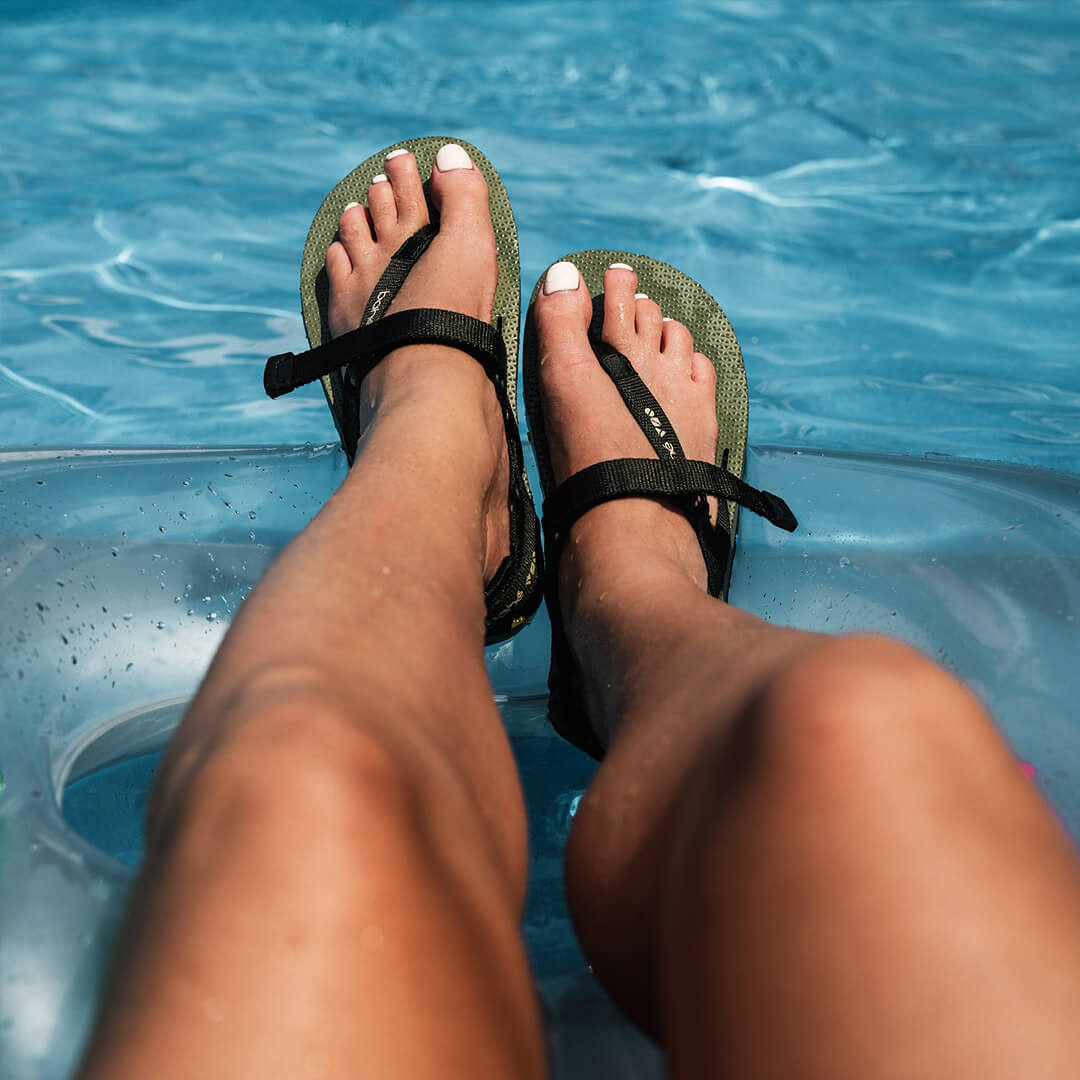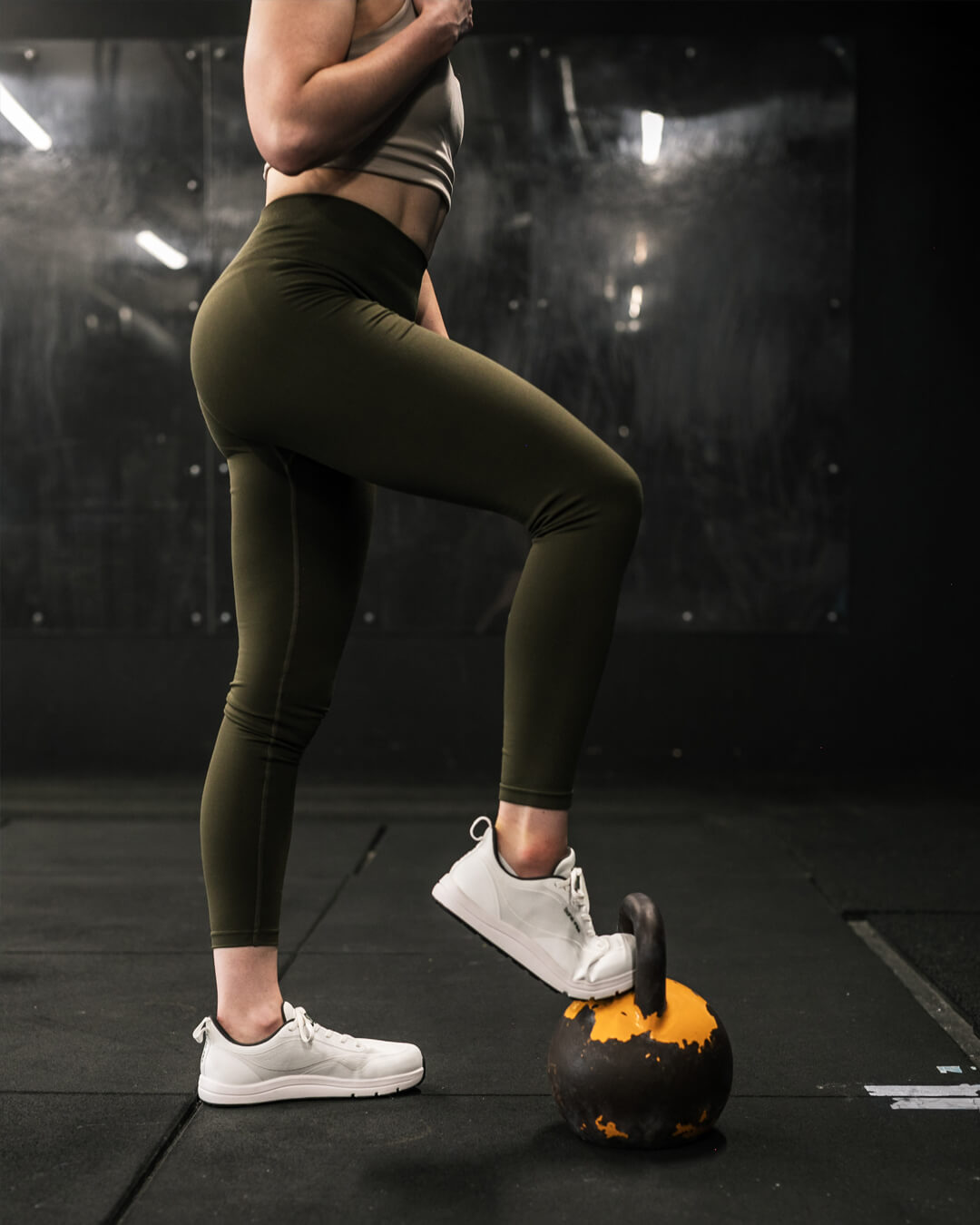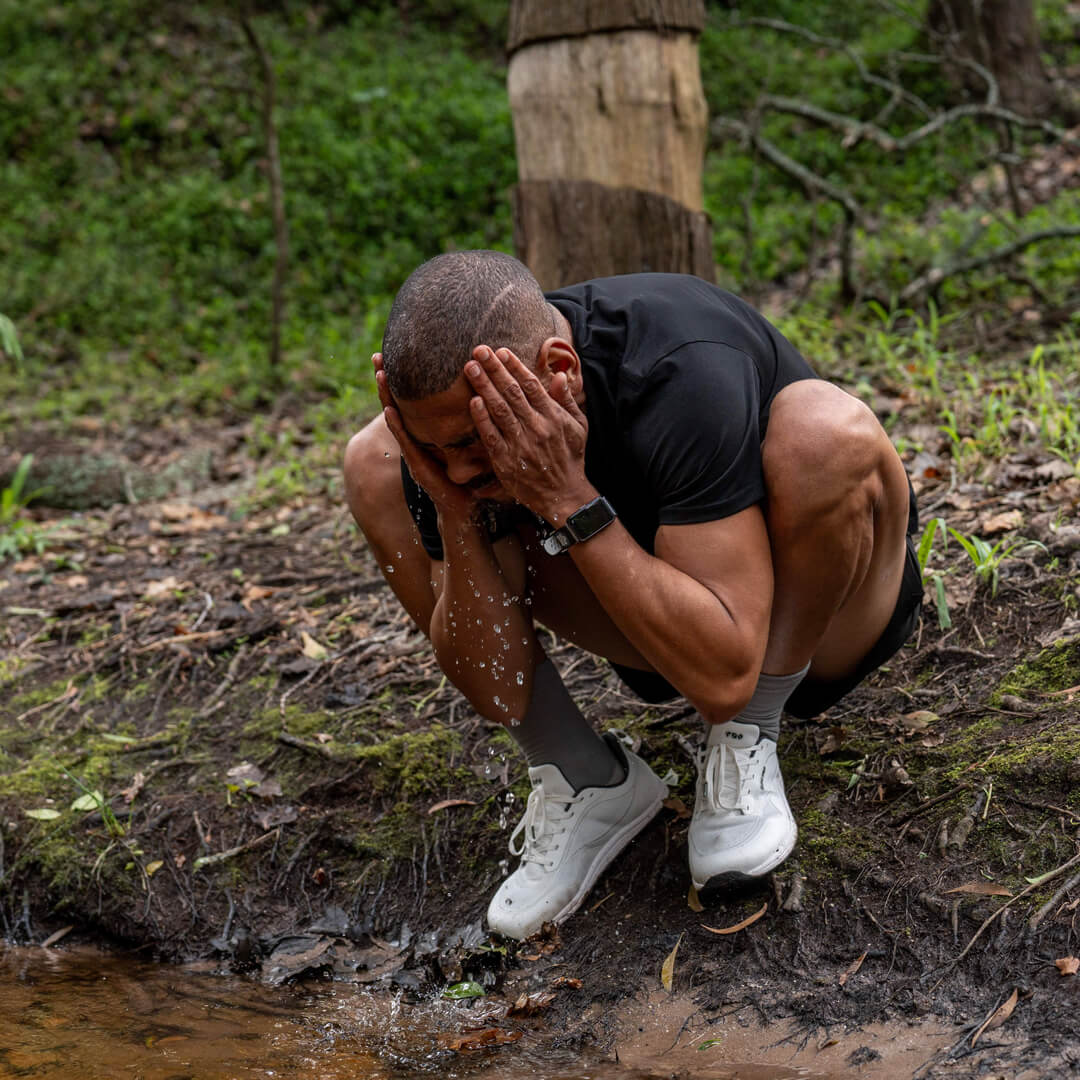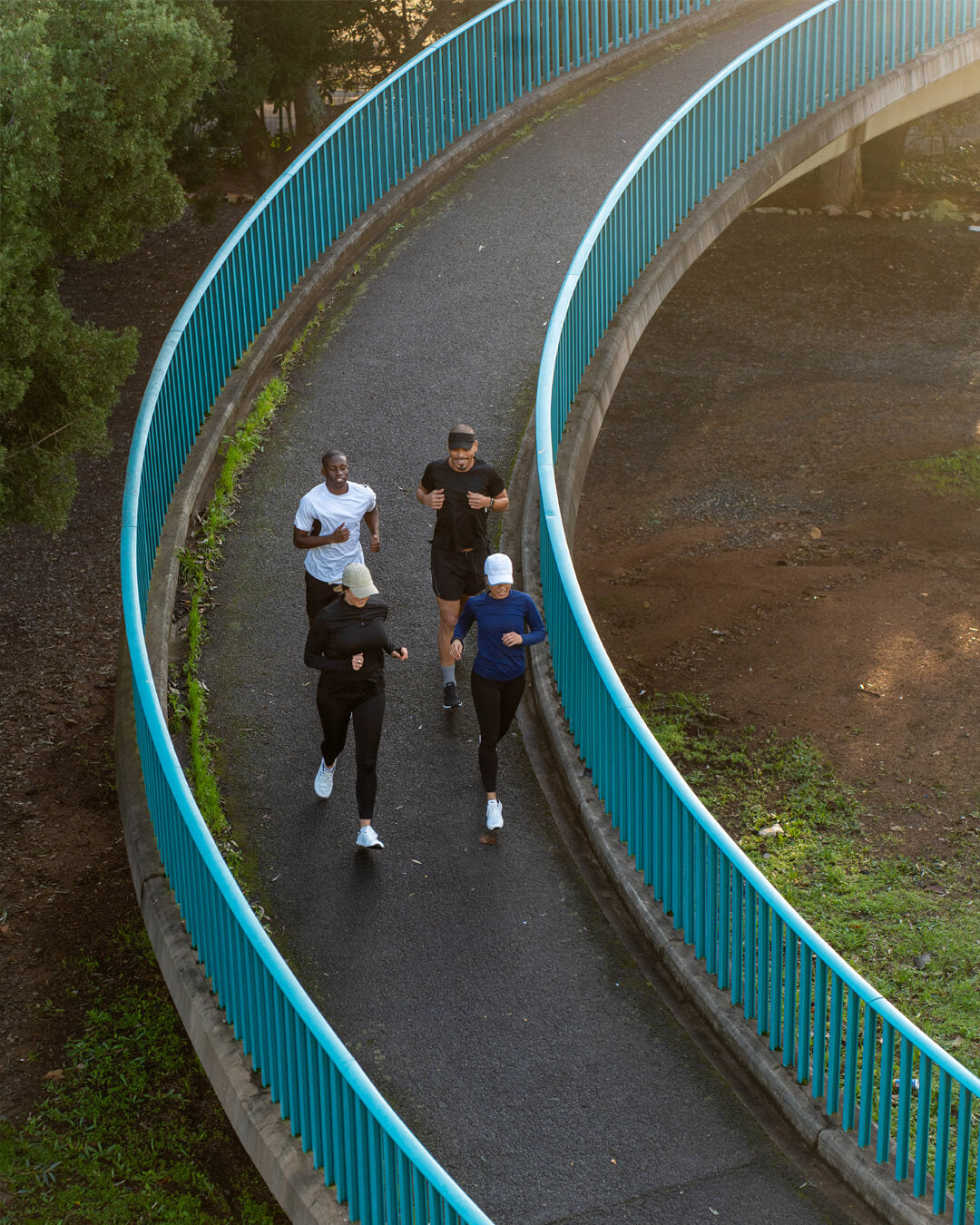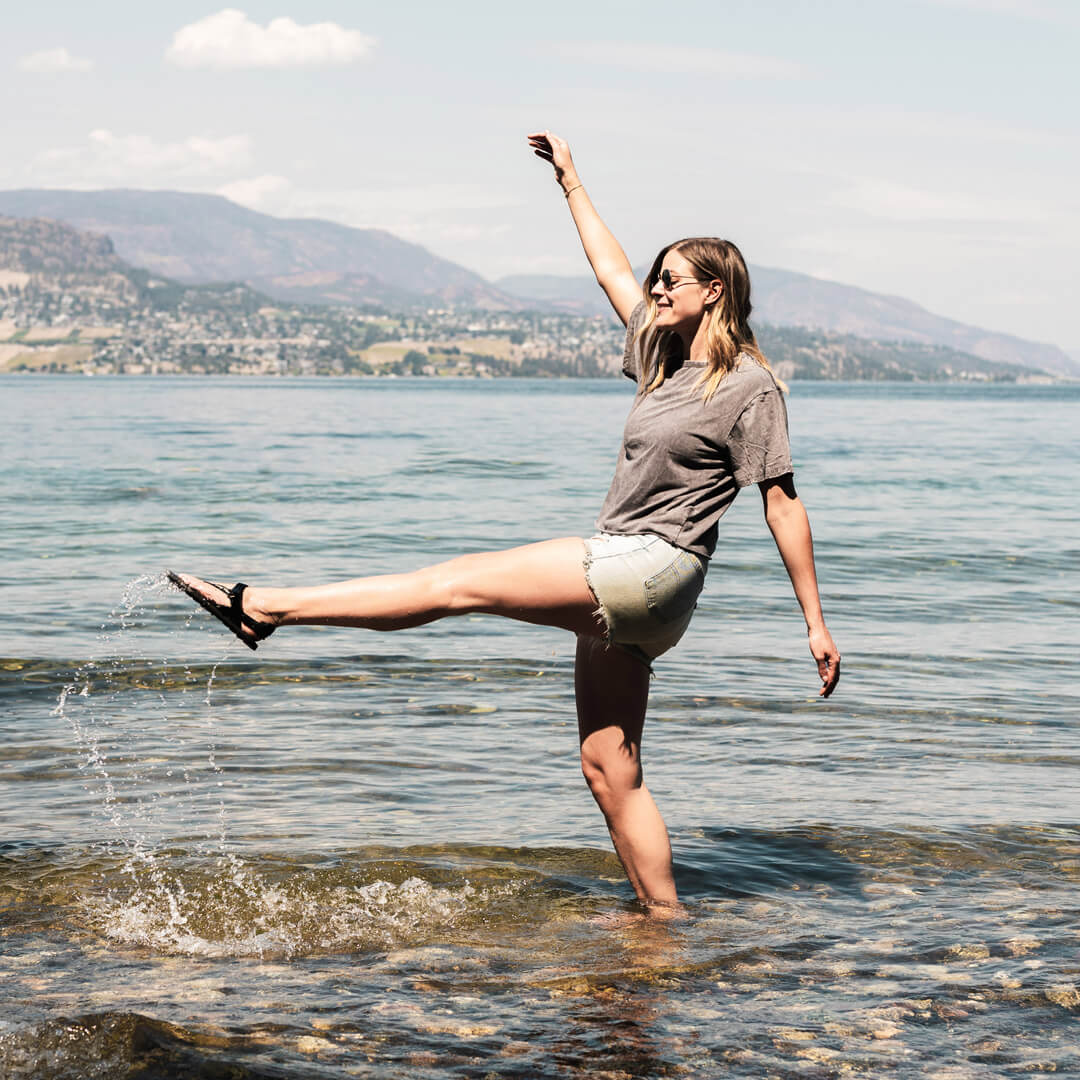1. What are barefoot-style shoes? What are the typical characteristics?
The term "barefoot shoes" gets thrown around a lot, and it can mean different things to different people. At My Foot Function, we prefer the term functional footwear when referring to shoes that most people call “barefoot shoes”, for us, barefoot shoes are those that aim to mimic the feeling of being as close to barefoot as possible. While some brands do this by focusing on a thin sole, we believe the real focus should be on the shape of the shoe. Many barefoot shoes provide a wide fit across the midfoot, but the toe box often tapers too early, leaving insufficient space for the toes to spread naturally. A truly barefoot-style shoe should provide ample room for the toes to spread out, which is essential for foot health. Barefoot shoes are often ‘zero drop’ meaning the height at the heel and ball of the foot are the same, while many traditional shoes have a high heel to toe drop which can affect posture. Where there is some ‘drop’, this should be minimal.

2. How are barefoot shoes designed with foot health in mind?
Barefoot shoes should never restrict the natural movement of the foot. To support foot health, they must be flexible enough to allow for natural foot function. The toe box should be spacious, so that it doesn’t squeeze the toes, and the shoe should be flat (zero drop i.e. same height at the heel and toes) to promote proper postural alignment. However, it’s equally important that the fit is not too loose, as a poorly fitting shoe can cause its own set of problems. A well-designed barefoot shoe strikes the balance of allowing natural movement while providing just enough foot support.

3. Can you explain how barefoot shoes support natural movement?
Unlike conventional shoes, which often feel tight and restrictive, barefoot shoes allow the foot's muscles, tendons, and ligaments to move and function as they naturally evolved to. Over time, this strengthens the foot, improves mobility, and leads to healthier, happier feet. Many people notice their feet becoming stronger and wider, even increasing by a full size, after wearing barefoot shoes for 6+ months. Just like a tree’s roots, the more room we give our feet, the more they will spread and flourish.

4. How do individuals transitioning to barefoot footwear typically benefit in terms of foot health and overall well-being?
Transitioning to barefoot shoes can bring significant improvements in foot health and overall well-being. Many people experience relief from long-term pain, including back pain, neck pain, and foot-related issues. The freedom that barefoot shoes offer can also enhance energy levels and overall comfort. If you wear barefoot shoes for a month and then go back to regular shoes, you’ll notice the difference! Our bodies get used to negative stress over time, but when given the positive sensation of a more natural shoe, we immediately feel the relief.
5. What conditions or foot issues can barefoot shoes help alleviate?
Barefoot shoes are particularly helpful for conditions caused by restricted movement, such as bunions. They also benefit people with nerve issues or fascial tightness, all of which can improve over time by allowing the foot to move naturally. If you have severely problematic feet, it’s crucial to transition slowly to avoid aggravating any pre-existing conditions.
6. What are the common barriers that prevent people from transitioning to barefoot-style shoes?
A common barrier that consumers face is that barefoot-style shoes look unusual, causing some wearers to feel self-conscious. While traditional shoes often feature pointed toe boxes for fashion, these designs serve no functional purpose and can actually restrict natural toe alignment, potentially leading to foot problems. Another issue we see is that endurance athletes believe they can quickly transition to barefoot shoes. Although this is often true for low-impact activities like walking, at My Foot Function we recommend a gradual approach for those accustomed to traditional footwear who wish to cover long distances. We can support athletes throughout this transition.
7. What initial advice would you give someone considering making the change to barefoot shoes?
Start by not compromising on the shoe’s fit. Choose shoes that don’t restrict your feet and begin by taking short walks around your home or garden, on flat ground. Pay attention to how your feet and lower legs feel, and gradually increase the time you spend in barefoot shoes. Listen to your body – this transition is very individual, and it’s important to go at your own pace.If you run or plan to play sports in your barefoot shoes, this will require a more thought out approach.
Keep your eyes peeled for our future post with tips for transitioning.
8. How do barefoot shoes influence athletic performance, especially among runners?
Many athletes are still sponsored by major (more restrictive) footwear brands, but there are incredible stories of individuals winning major competitions while running barefoot or in minimalist shoes. This highlights that the shoe is not as important for performance as we often think. That said, for certain sports, cushioning, traction, and stiff levers are beneficial, which is why some specialised shoes are advantageous. In running, though, the ability to move freely and naturally often outweighs the need for excessive support.

9. Can you share a personal experience of someone you’ve advised who transitioned to barefoot shoes?
One of the most impactful stories involves a hairdresser who had been in chronic pain for over 10 years. After transitioning to more supportive, flat shoes (not strictly barefoot but close), her pain began to decrease within weeks. Over time, she noticed less strain on her body, and the discomfort she had lived with for years started to melt away. While these weren’t classic barefoot shoes, they provided her feet with the much-needed support and freedom they had been missing.
10. Can you share any research that My Foot Function has done into the health benefits associated with barefoot shoes?
In 2023, My Foot Function conducted a study in Sri Lanka, where we looked at the hallux angle (the straightness of the big toe) of individuals from shoe-wearing versus non-shoe-wearing populations. A straight big toe helps you push off evenly when you walk or run. This even push-off is important for balance and can prevent pain in your feet and ankles.
After studying 1,000 individuals, we found that those who went without shoes had a significantly better hallux angles and almost no signs of bunions. This research supports the idea that wearing incorrect footwear can dramatically change the shape of your feet, reinforcing the importance of choosing the right shoes.

11. Once someone has transitioned to barefoot shoes, how easy is it for them to find footwear options?
Finding truly barefoot-friendly shoes can still be a challenge, but it’s getting easier with brands like Bahé. Their shoes offer a great shape, plenty of space for the toes, and a stylish design that fits the functional needs of the foot.
At My Foot Function, we work with a few trusted brands, and Bahé is one we love to recommend to our clients. Changing your footwear can be life-changing, and brands like Bahé are making it much easier for people to take that first step.
If you would like to be supported as you transition please explore the courses offered by My Foot Function and browse the barefoot style shoes offered at Bahé.

